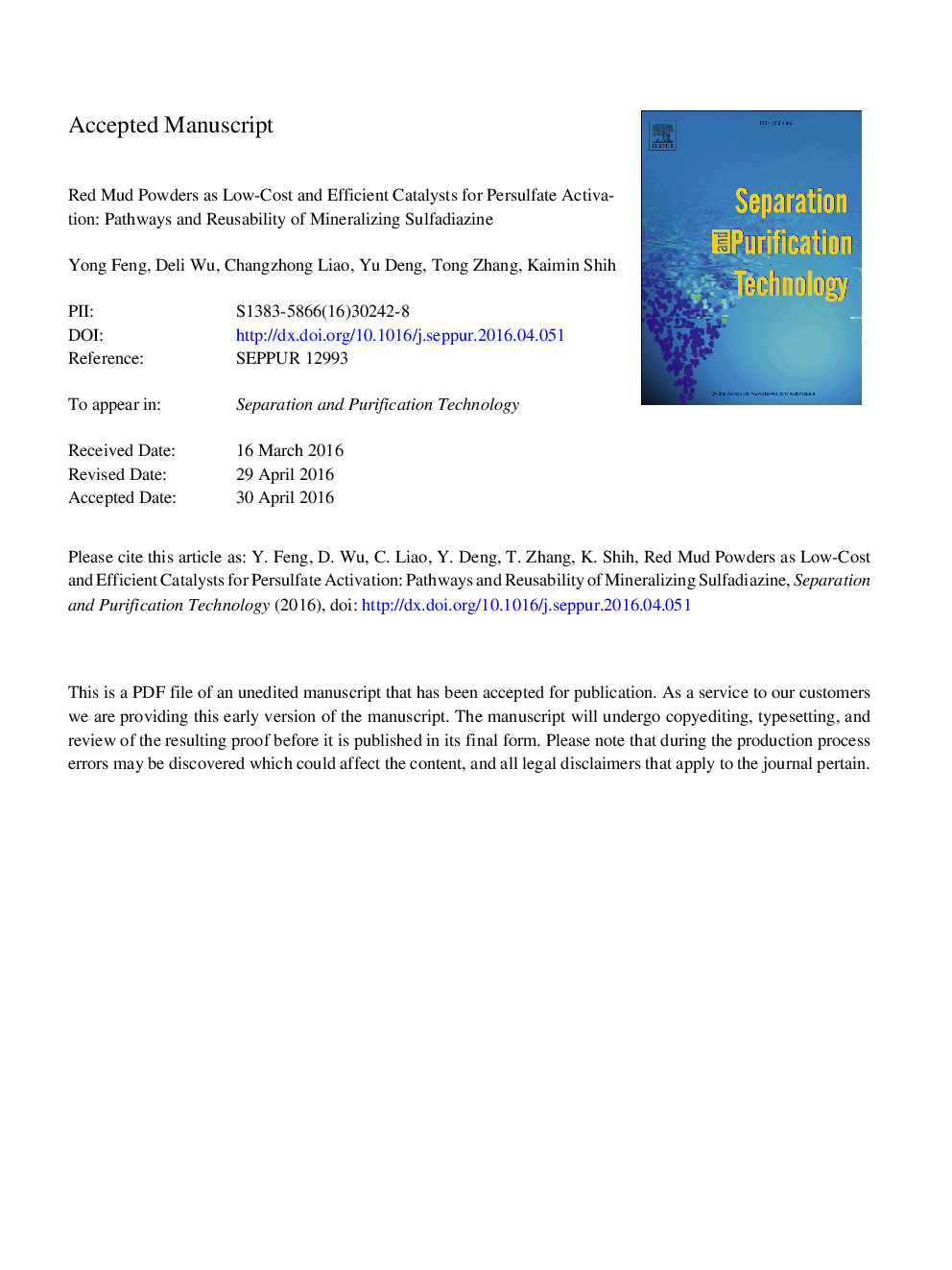| Article ID | Journal | Published Year | Pages | File Type |
|---|---|---|---|---|
| 639863 | Separation and Purification Technology | 2016 | 39 Pages |
Abstract
Red mud powders were used as catalysts for persulfate activation with sulfadiazine as the target contaminant. The quantitative analysis of red mud powders showed that hematite, perovskite, andradite, cancrinite, diaspore, gibbsite, and calcite were the major compositions of red mud powders. Radical identification showed hydroxyl and sulfate radicals were probably generated and responsible for sulfadiazine degradation. To evaluate the catalytic efficiency of red mud powders toward persulfate, the degradation of sulfadiazine in the red mud powders/persulfate system was determined under various experimental conditions. The results showed that the rate of sulfadiazine degradation responded positively to increases in persulfate dosage, and that a scavenger effect from the loading of red mud powders occurred. Under the conditions of 1.75Â mM persulfate and 2Â g/L red mud powders, approximately 100% of the sulfadiazine could be degraded. Meanwhile, less than 10% of the persulfate was consumed after 180Â min under the same conditions. Based on the products identified, an SO2 extraction-dominated degradation pathway was proposed. The quantitative X-ray diffraction study and series of beneficial use experiments showed that the red mud powders had a high stability and a persistent catalytic efficiency, with degradation rates of 94.0%, 92.5%, 92.1%, 87.5% and 87.6% for the 1st, 2nd, 3rd, 4th, and 5th runs, respectively.
Related Topics
Physical Sciences and Engineering
Chemical Engineering
Filtration and Separation
Authors
Yong Feng, Deli Wu, Changzhong Liao, Yu Deng, Tong Zhang, Kaimin Shih,
